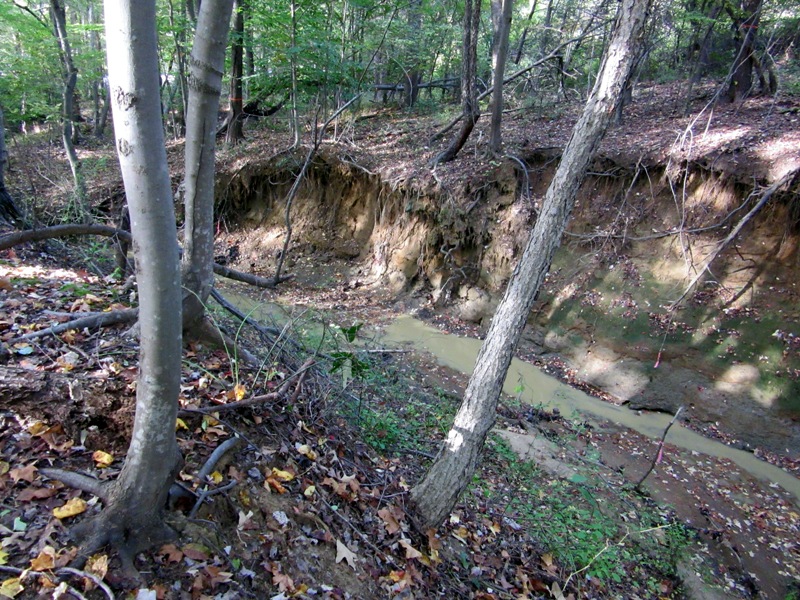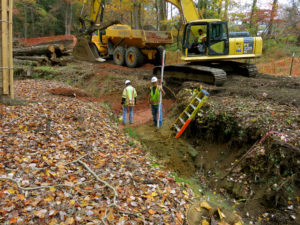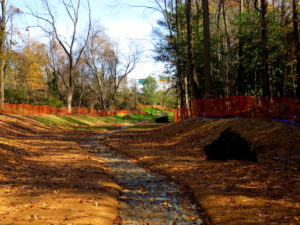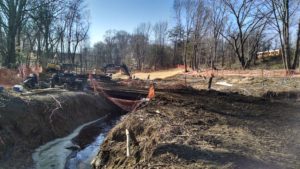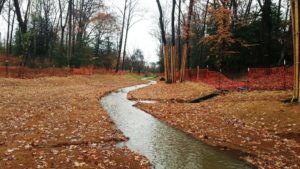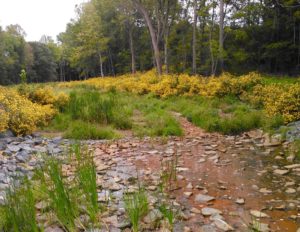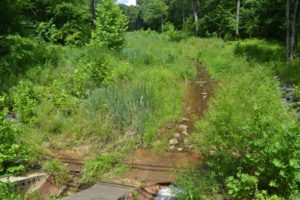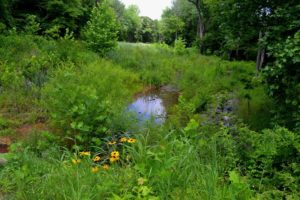A series soil cores up to 30 feet deep have demonstrated that a stream channel never existed at this site until a manmade dam failed in the 1970s, exposing over 30,000 tons of legacy sediment to continual erosion and transport into Broad Creek. Rehabilitation of this site was accomplished by the construction of an integrated wetland/stream restoration project within the valley. Part of the project removed legacy sediments from the valley and re-establishment the historic wetland and floodplain elevations, while other portions of the project increased the elevation of the water table to existing valley grades.
This site historically served as a livestock pond, and at some point in the mid-20th century, the pond and its earthen berm were massively expanded to impound approximately 4-5 acres of water within the valley, requiring a dam approximately 15-18′ tall from toe to crown. This allowed a new use of the pond: irrigation source. This dam eventually failed in the 1970s, and the subsequent erosion resulting from stormwater pulses has incised a channel an additional 5-6′ lower than the dam’s original footing. Headcutting began furiously through the pond’s legacy sediments, and has now cut the base grade below the elevation of groundwater interception.
The site was mapped as “highly degraded” in the Anne Arundel County Phase II WIP, and was one of Maryland State Highway Administration’s top priorities for stream/wetland restoration in Maryland. The site is at the headwaters of Broad Creek, which along with Church Creek represents the strategic focus of the Federation for the purposes of key habitat improvement and erosion/sediment reduction. The project was specifically listed as a high priority project in our initial Watershed Plan (2002) and subsequent watershed restoration plan (2008). Construction began in 2015, and was completed in 2016 by SHA.
